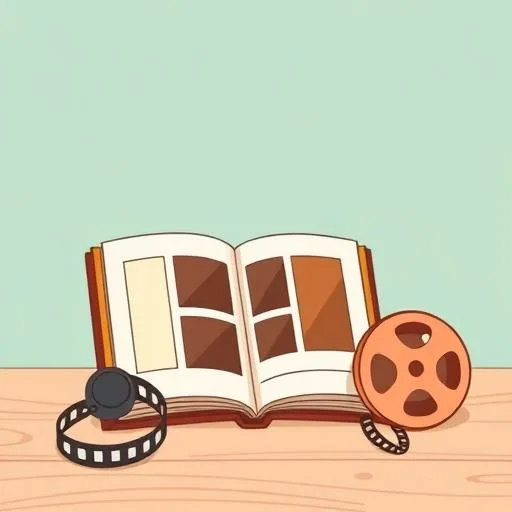
Ever stumbled upon an old photo album and felt that pang—like there’s a whole chapter missing? Now picture this: one of cinema’s greatest treasures, Orson Welles’ ‘The Magnificent Ambersons,’ had nearly half its soul sliced away by studio scissors back in 1942. Fast forward to today, and a bold team called Showrunner isn’t just mourning those lost 43 minutes—they’re stitching them back together with AI and elbow grease. And friends, this isn’t just movie magic; it’s a mirror held up to our parenting journey in today’s lightning-paced digital age.
The Heartbeat in the Hardware: More Than Just Code

Let’s get real: when you hear ‘AI rebuilding a film,’ it’s easy to picture robots churning out frames. But Showrunner’s approach? They’re teaming up with humans who’ve poured years into understanding Welles’ vision. Take Brian Rose—he spent five years sketching sets by hand, studying old photos, and mapping camera angles like a film detective. Then they layer in AI to generate keyframes, but always guided by Rose’s blueprint. Even cooler? They’re filming real actors and using AI to gently blend faces, so the ghost of Welles’ original cast whispers through the pixels. It’s not cold tech—it’s like when your kid squishes paint between their fingers, messy but totally human. Like that time you used a travel app to plan a park adventure, but the best memories were the spontaneous ice-cream stops you added because your kid’s eyes lit up at the sight of sprinkles.
This approach got me thinking about how we guide our children’s creativity in a world increasingly shaped by AI. This ‘noncommercial, academic project’ (Hollywood Reporter) teaches us something vital: smart tools shine brightest when they amplify human creativity, not replace it. Our kids’ world will be flooded with AI helpers, but the magic stories? Still written with good old-fashioned creativity—in mud pies, block towers, and make-believe adventures.
Why ‘What If?’ Beats ‘What Is’ for Growing Minds

Showrunner’s CEO Edward Saatchi put it perfectly: ‘We hope this gives people a sense of a positive contribution AI can make for storytelling.’ That ‘what if?’ spirit? It’s the golden ticket for our kids. Imagine your seven-year-old googling ‘why do leaves change color?’ then sprinting outside to collect them—the tool sparked wonder, but real learning bloomed in the mud and sunshine. That’s the sweet spot we’re aiming for: teaching them to see tech as curiosity’s sidekick, not its boss.
Think about it—when Brian Rose rebuilt the Ambersons sets using charcoal drawings and 3D models (Screen Rant), he started with hands-on exploration. Our parenting hack? Let kids build worlds with blocks before Minecraft, or tell stories with puppets before AI chatbots. Just last week, I saw this principle in action when my daughter turned a cardboard box into a spaceship while chatting with a voice assistant. She didn’t need the tech to play—but it added rocket sound effects that made her giggles soar. That’s the balance: tools enhancing, not eclipsing, the messy joy of creation.
Guardrails, Not Gates: Raising Digital Natives with Roots
Here’s the kicker: Showrunner’s team has Warner Bros. breathing down their necks about rights, which reminds me we’re the stewards of our kids’ digital gardens. In many cultures, including my own, it’s not about locking things away but about understanding boundaries together—as a family, as a community. It’s not about locking tech away—it’s about planting strong roots first. How? Blend the virtual with the visceral. After screen time, ask, ‘What did you make today?’ If the answer’s just ‘watched videos,’ pivot gently: ‘Let’s build something using what you learned!’
Like Rose’s meticulous work mapping camera movements to archival photos (IndieWire), anchor tech in tangible experiences. Try this: turn a history lesson into a scavenger hunt. If your child learns about 1940s America through AI-recreated Ambersons scenes, follow it up by baking vintage cookies together or sketching their own ‘lost chapter’ of a family story. The cookie crumbs and crayon smudges? Those are the footprints of real connection.
The Holy Grail Isn’t Perfection—It’s Presence

William Friedkin called the lost Ambersons footage cinema’s ‘holy grail.’ But for us parents, the real treasure isn’t perfectly reconstructed scenes—it’s raising kids who value what tech can’t replicate. For many of us, tech can’t replace the irreplaceable—those moments of pure presence that connect us across generations. That spark when your child explains their Lego masterpiece? Pure. The way they comfort a friend without a screen between them? Priceless. Showrunner’s project honors Welles’ humanity first, just as our job is to ensure tech serves moments like these, never steals them.
Here’s a simple experiment: swap one ‘screen minute’ for a ‘story minute.’ Ask your kid to describe their favorite movie character, then build that hero with blankets and couch cushions. Watch how fast imagination outshines algorithms. Because whether it’s Welles’ vision or your child’s dreams, the magic lives in the spaces between the pixels—in the laughter, the ‘oops’ moments, the hand squeezed tight when walking home from school.
Leaving Room for the Unreconstructed
Here’s the beautiful truth Showrunner admits: their AI version won’t replace Welles’ original—if it’s ever found. And that’s the lesson that warms my dad heart. Some gaps are meant to stay gaps. Like when your toddler asks where dreams come from, and it’s okay to say, ‘Let’s wonder about that together.’ Imperfection is the soil where resilience grows.
What are we reconstructing for our children’s future? What lost moments are we preserving with intention? As AI gets better at filling historical holes, let’s teach kids it’s fine not to have all the answers. Plant this seed early: ‘What feels most real to you right now?’ Maybe it’s the scent of rain on pavement after playtime, or the weight of a book in small hands. Those sensory moments—unreconstructed, unalgorithmic—are where childhood magic lives. And hey, if your kid ‘rebuilds’ a broken toy with tape and hope? Celebrate the effort, not the flaw. Because the most magnificent stories, whether on film or in our family albums, aren’t the perfectly reconstructed ones—they’re the ones told with messy hands, full hearts, and time enough to wonder.
Source: AI Will Be Used to ‘Reconstruct’ Lost Orson Welles Film ‘The Magnificent Ambersons’, Decrypt, 2025/09/06 17:01:03
